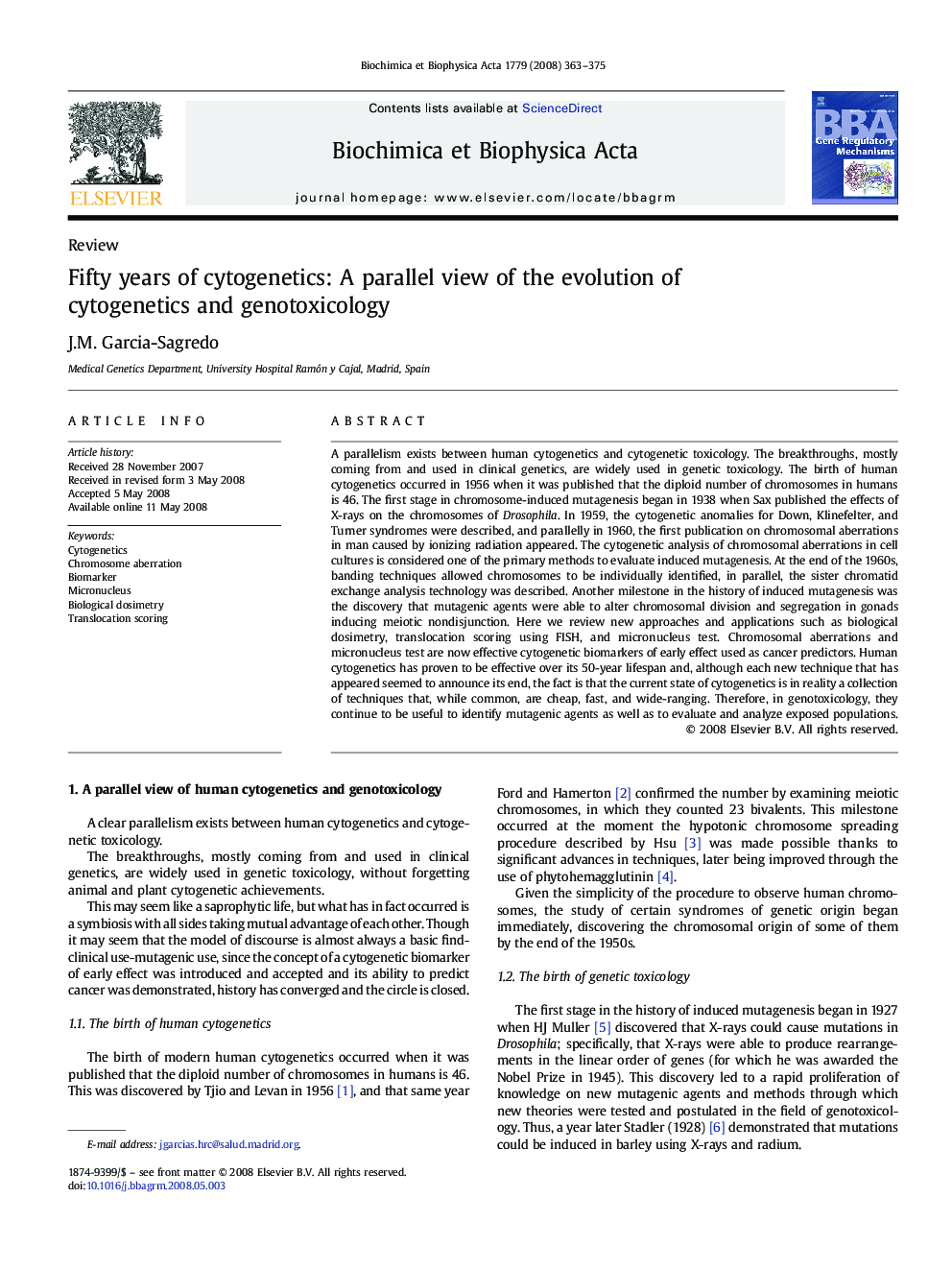| Article ID | Journal | Published Year | Pages | File Type |
|---|---|---|---|---|
| 1947075 | Biochimica et Biophysica Acta (BBA) - Gene Regulatory Mechanisms | 2008 | 13 Pages |
A parallelism exists between human cytogenetics and cytogenetic toxicology. The breakthroughs, mostly coming from and used in clinical genetics, are widely used in genetic toxicology. The birth of human cytogenetics occurred in 1956 when it was published that the diploid number of chromosomes in humans is 46. The first stage in chromosome-induced mutagenesis began in 1938 when Sax published the effects of X-rays on the chromosomes of Drosophila. In 1959, the cytogenetic anomalies for Down, Klinefelter, and Turner syndromes were described, and parallelly in 1960, the first publication on chromosomal aberrations in man caused by ionizing radiation appeared. The cytogenetic analysis of chromosomal aberrations in cell cultures is considered one of the primary methods to evaluate induced mutagenesis. At the end of the 1960s, banding techniques allowed chromosomes to be individually identified, in parallel, the sister chromatid exchange analysis technology was described. Another milestone in the history of induced mutagenesis was the discovery that mutagenic agents were able to alter chromosomal division and segregation in gonads inducing meiotic nondisjunction. Here we review new approaches and applications such as biological dosimetry, translocation scoring using FISH, and micronucleus test. Chromosomal aberrations and micronucleus test are now effective cytogenetic biomarkers of early effect used as cancer predictors. Human cytogenetics has proven to be effective over its 50-year lifespan and, although each new technique that has appeared seemed to announce its end, the fact is that the current state of cytogenetics is in reality a collection of techniques that, while common, are cheap, fast, and wide-ranging. Therefore, in genotoxicology, they continue to be useful to identify mutagenic agents as well as to evaluate and analyze exposed populations.
